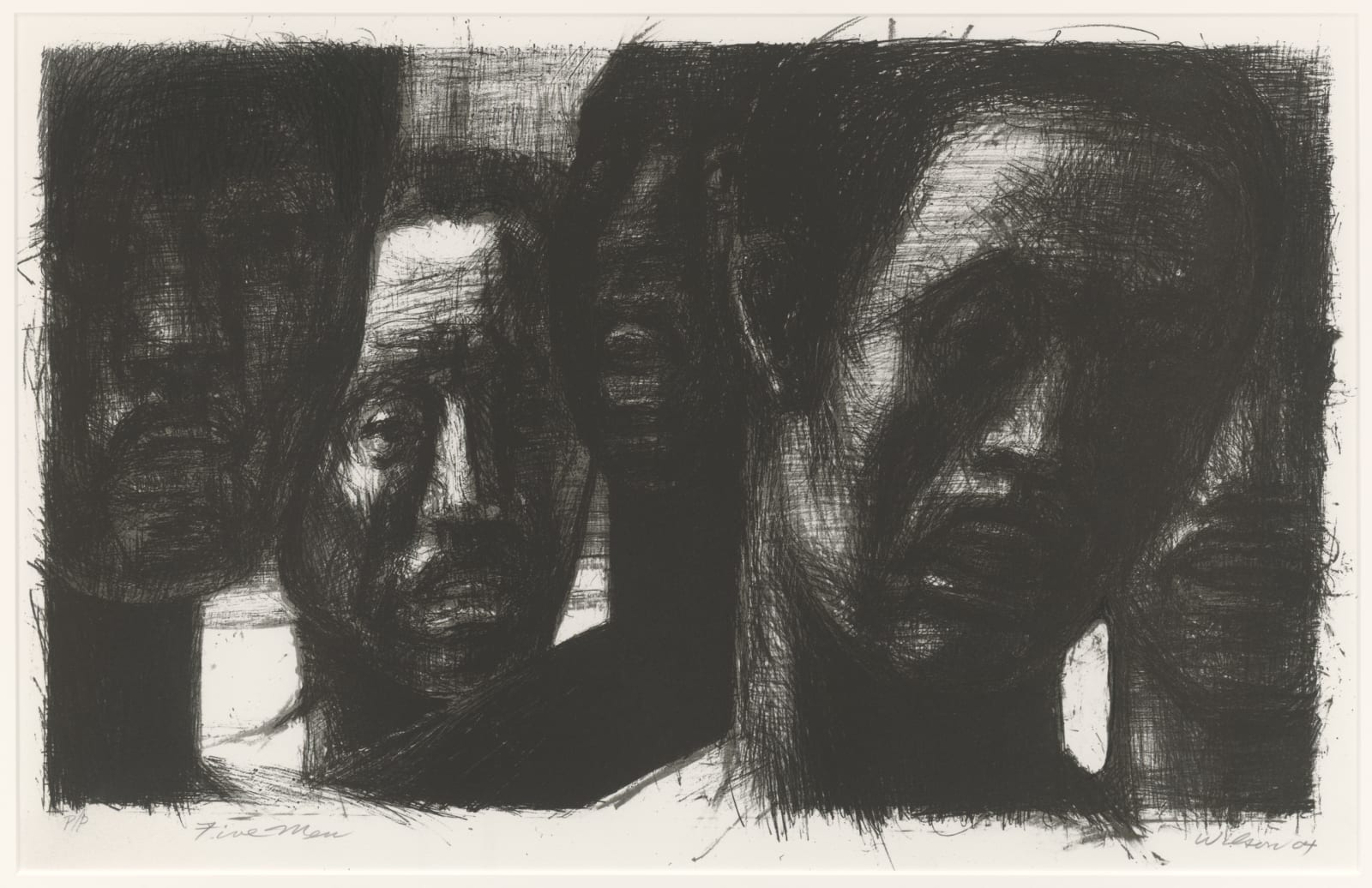John Woodrow Wilson American, 1922-2015
framed: 23 1/8 x 32 1/2"
John Woodrow Wilson's initial art studies began at Roxbury Memorial High School and the Roxbury Boys Club with teachers who were students at the School of the Museum of Fine Arts, Boston. When faculty from the MFA saw Wilson's work via his teachers from the Boys Club, he received a full scholarship to the School of the Museum of Fine Arts, graduating with high honors in 1945. In 1947, Wilson graduated from Tufts University while also teaching at Boris Mirski School of Modern Art, which made its debut with a significant exhibition by Guatemalan modernist, Carlos Merida. The Mirski Gallery was a famous venue for local artists who did not fit the traditionalist mold of an overtly conservative Boston art scene. Wilson lived in Paris from 1948-49 through an MFA fellowship, where he studied with Fernand Leger.
In 1950 he married Julie Kowtich, won a John Hay Whitney Fellowship, and moved to Mexico. The accessibility of the great Mexican murals influenced Wilson greatly and fell in line with his social-political views. Jose Clement Orozco's work, in particular, inspired Wilson's aesthetic and artistic mission. Coming a generation after Orozco and living through the Civil Rights Movement in the United States, Wilson wanted his art to convey a strong message and make people question preconceived notions. When he returned to the United States in 1956, he created artwork for labor unions in Chicago. He taught for a short time in New York City before returning to Massachusetts in 1964 to teach at Boston University. His progressive political views and his intense interest in art led him to create important political statement pieces throughout the later years in his life.
Five Men (2004) is a profound and expressive lithograph. With just black and gray, Wilson exploits the expressive range possible with a litho crayon, from pencil-thin lines to dense, greasy cross-hatching, he shows us every mark, every scratch in the stone. He depicts each man from shoulders up, their faces extend beyond the picture plane, creating an enclosed, claustrophobic space. The central figure is wide-eyed with mouth agape and head back, while the other four men look dreadfully straight at the viewer. This image is open to interpretation. Who are these five men? Are they inside or outside? Acknowledging Wilson's fight for social and racial justice in America, one wonders what these men have just witnessed.

